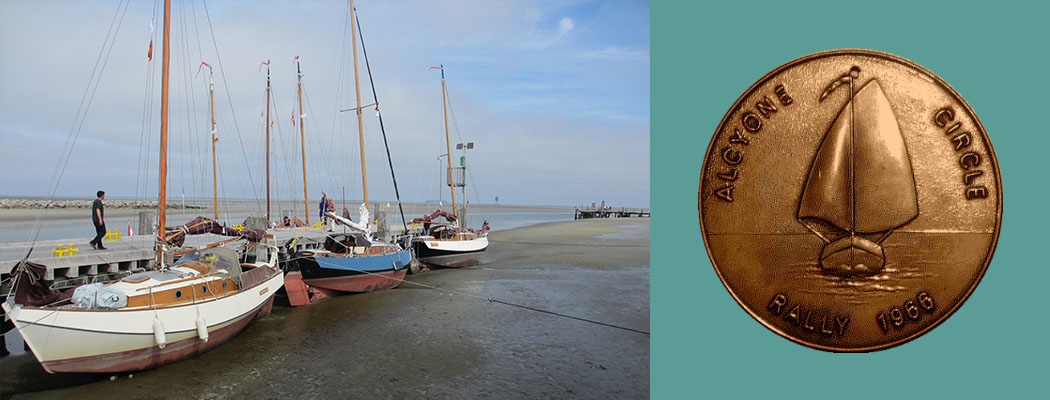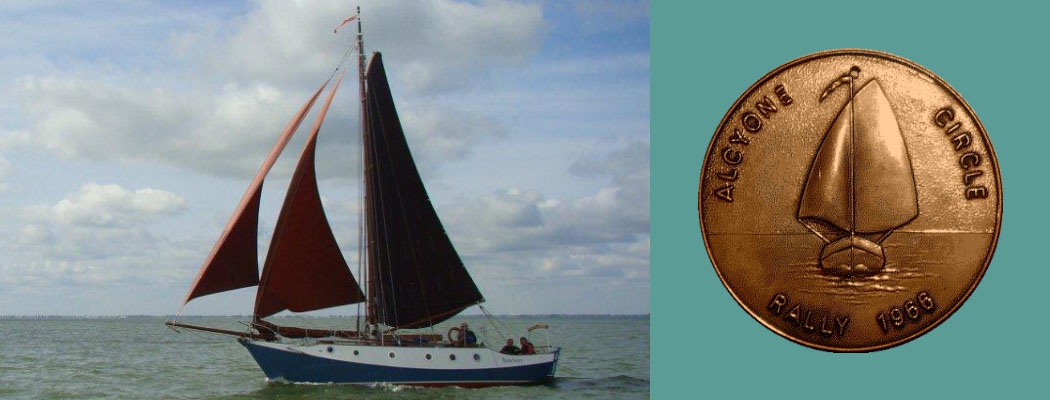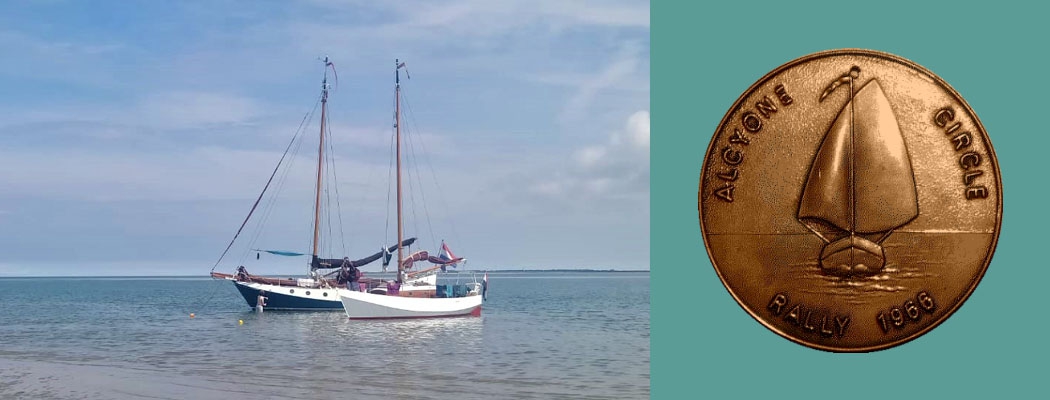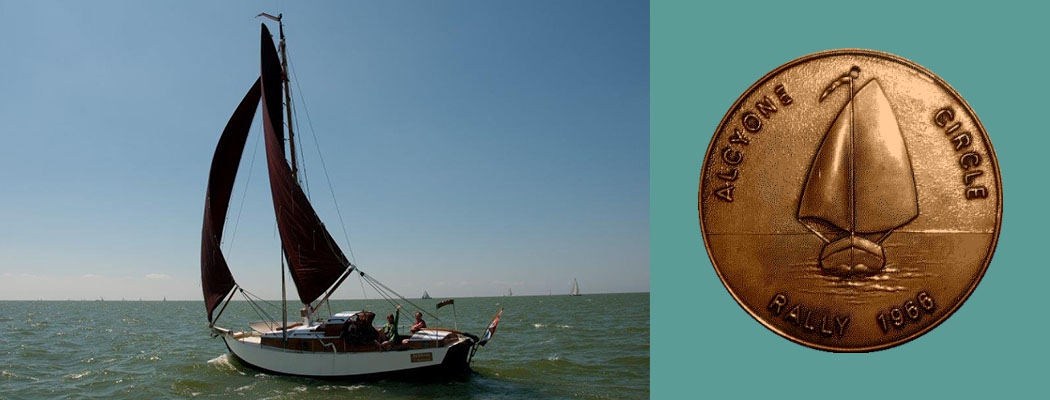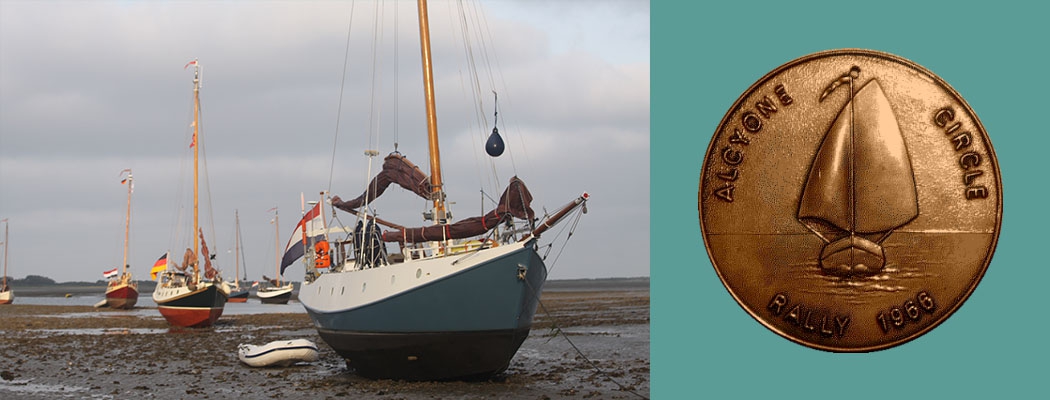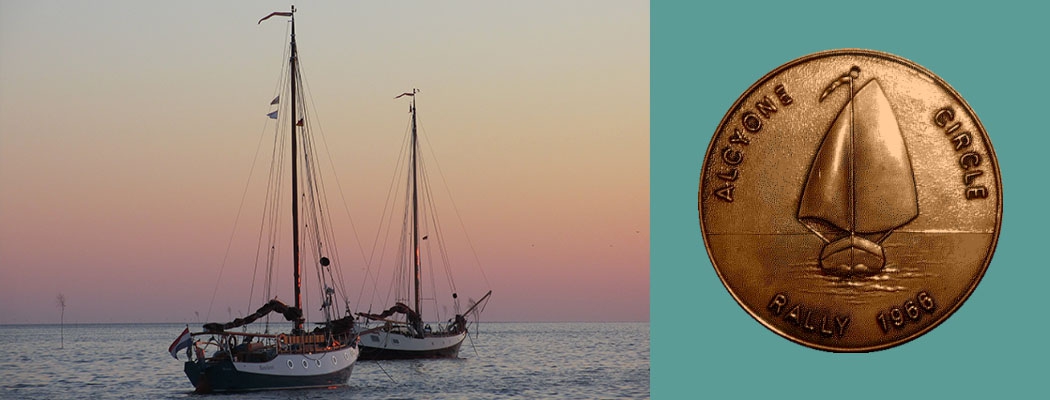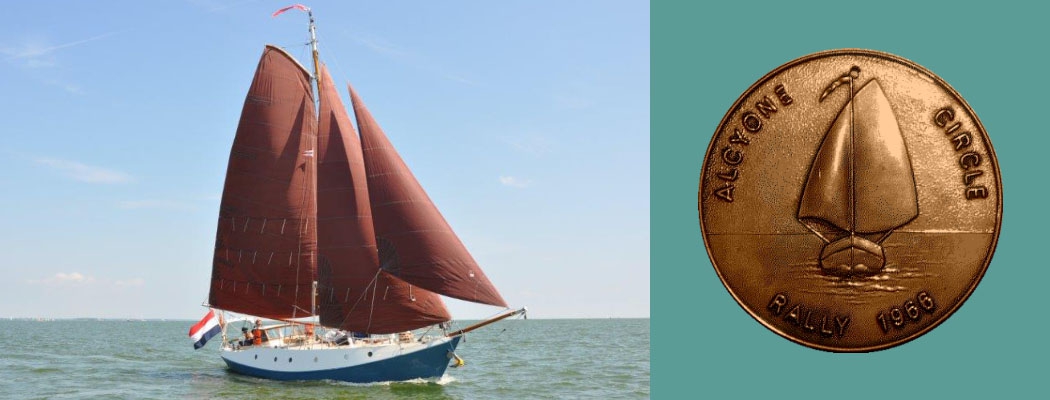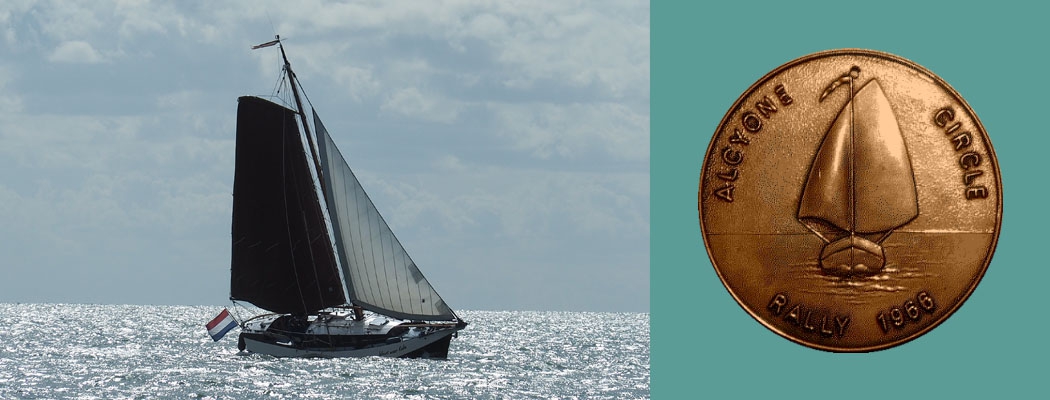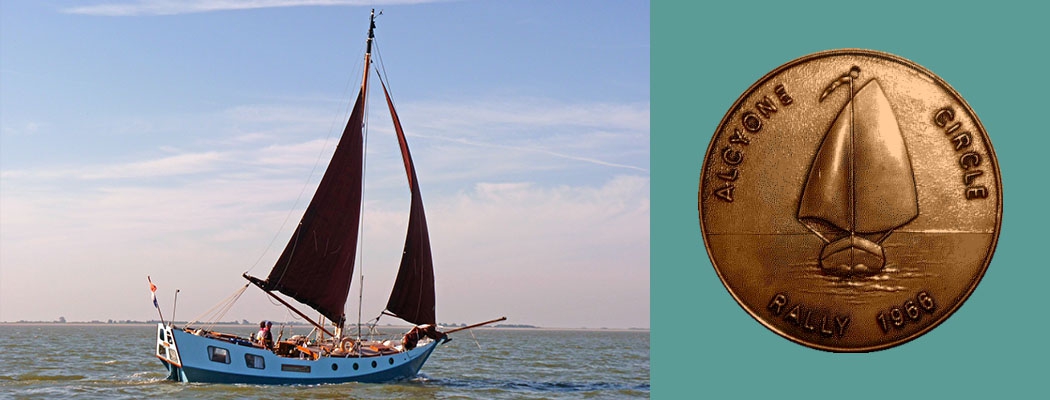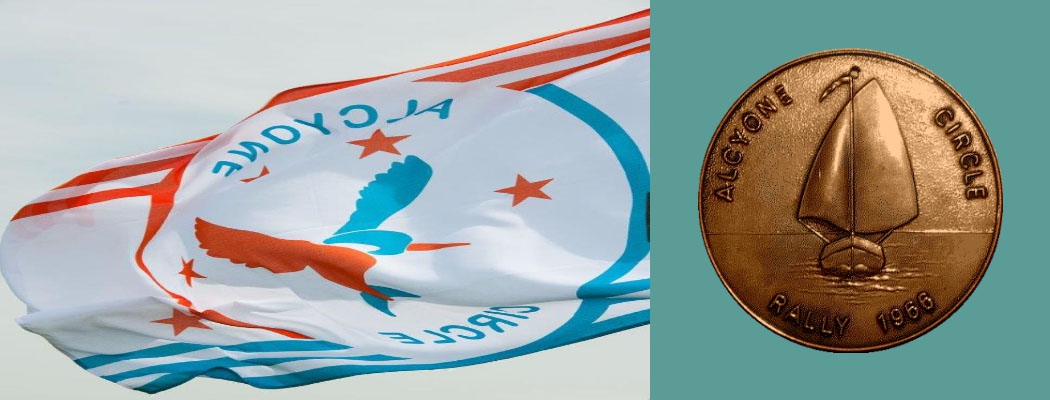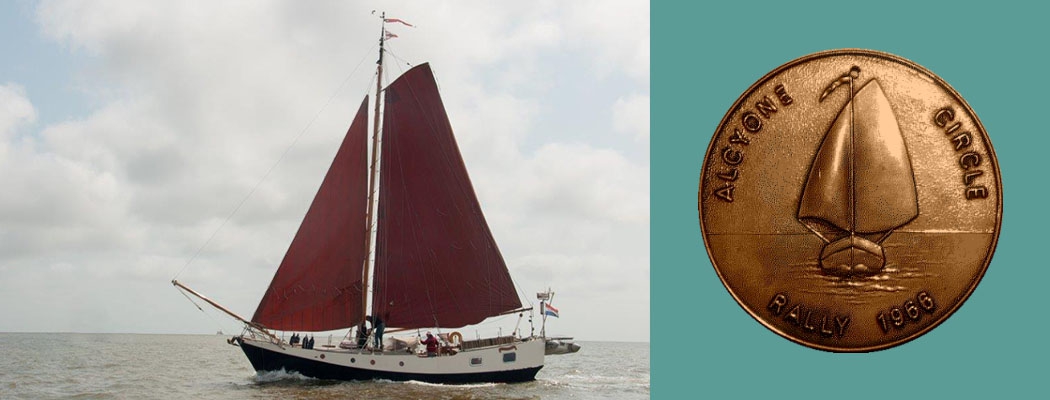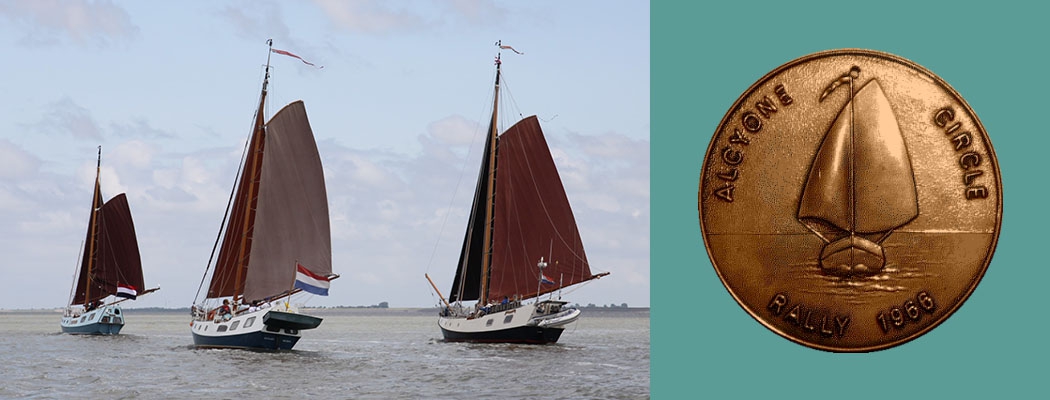 Wintermeeting 1977
Wintermeeting 1977
We intend to have our wintermeeting on Saturday the 22nd January 1977. Mr. and Mrs. Broekens have invited us in their house: Konijnenwal 25, Tiel. the guests are expected between 17.00 and 17.30 hours. All boat owners and their crews are very welcome.
Please write or telephone Mrs. Broekens as soon as possible with how many people you intend to come!
Those who have good films or colour-slides made this summer of their cruises are kindly invited to bring those with them. If time permits, we might show them.
Ships and Owners
Several members made interesting voyages this summer in their boats. Some stayed in Holland, sailing in Friesland and Zeeland. Others went abroad and here Denmark had priority. We heard about the “Banckert” of Mr. Broekens, the “van Linschoten” of Baron Collot d’Escury and the “Marmara” of Miss Scheltema, all having been there.
We highly appreciated that Mr. Rogers was again present at our summer meeting with the “Alcyone”. He got back safely to the Medway.
Mr. van Marle sailed this year to greece in the “Caecilia”. As an annex to this letter we enclose his story about his journey.
Mr. Ide bought the “Helena Anna”. During the rally he was directly promoted to interim-admiral and all our ships passed before him on the “Helena Anna”.
The “Zeekameel” was bought by Mr. J. Dokman and the “Cormorant” by Mr. Ir. E. Grevink of Roermond.
Mr. and Mrs. Haszard sold their “Koet to Mr. J.D. Brown of Annapolis, and Mr. J. Huurman sold the “Vrouwezand” to Mr. H. Remmers of Zweikhuizen. The “Bataviae Princeps” was sold to Mr. M.J. Krijgsman of Alphen aan den Rijn and the “Annabel” to Mr. Jim Cruickshank of Edinburgh. The “Vrouwe Martijntje” also changed of owner. Her skipper is now Mr. Drs. R. Barentz of Krommenie. Quite a lot of changes! All the new owners are very welcome in our Circle. We hope to see them often on our meetings and wish them pleasant sailing in their ships. A farewell to the old members of our Circle. We understand for some of them it was a very difficult thing to shell their ships.
Subscriptions
Owners of ships are kindly requested to remit their yearly subscriptions into Postgiro account no. 3721241 of the Alcyone Circle, Amsterdam. (£ 3.-., DM 15.-, or Dfl. 15.–)
Rally 1976
Favoured by extreme nice weather we held our rally at Numansdorp during the weekend of the 7th August.
A truly cooperative harbourmaster arranged a special berth for our ships in a corner of the harbour, where it is “strictly forbidden to moor”. Attending ships were: Alcyone; Alcyone II; Bataviae Princeps; Van Linschoten; Majella; Helena Anna; Frank Justin; Gwenllian; Vrouwe Martijntje; Margaretha; and late but straight from the Baltic, Marmara. Not many ships, but enough to make a happy crowd. To those who were not there – you missed something, somehow.
Saturday morning we started with the traditional palaver. Main point of the discussion was: are we going to race or are we going to try to keep together? The latter being a Dutch tradition called “Admiraalzeilen”. (For those who are not familiar – formation sailing for the admiral.)
Captain Ide of “Helena Anna” was promoted to interim admiral. Before lunch we did some training and after lunch ten ships formed one squadron. We made a real show!
Well in time, we returned to Numansdorp to shake up the bottles. The dinner was good, the children-stable made enough noise to make the conversation almost impossible, being a good reason to many of us to extend the evening, just missing the sunrise.
Sunday morning at about 10.30 all ships went under sail to the sherry party beyond the “Sassenplaat”. At 16.00 the farewell-noise started and all ships went their own way. A certain Caroline Barton wrote a worthwhile reading article in one of our biggest newspapers about the rally. Thank you Carry for being our public relations manager!
With the “Caecilia” to Greece
Are the seas around Greece the best sailing-grounds of the world? I do not know, but it is really a great pleasure to sail there over the deep blue sea, to arrive in a hospitable port or a fine, isolated cove of one of the many islands.
I was told that the bluer the water of the sea, the purer it is. When that is true, the water of the Aegean and ionian seas are very pure indeed.
But the winds are treacherous. It happened to us, that within one or two minutes, we came from a dead-calm into a real gale. Once this gale reached a force of more than 50 miles per hour, that is Beaufortscale force 10. But the ship was well built and could well stand it, but alas not so the sail.
In May last year we left our good home-port Muiden and thanks to a good NE breeze we soon came to Brittany. Along the beautiful south coast thereof we came to the Gironde and passing Bordeaux, we reached the Canal du Midi, where we sailed between the hills covered with vineyards.
For our shallow draught ships, with a mast which can very easily be lowered, the canal provides no special difficulties and it is an easy way to reach the Mediterranean. It took us, however, more than a week and the passing of about 160 locks to get there.
We sailed along the south coast of France and then to Corsica and Sardinia, from where we crossed to Fiumicino, quite near Rome. you will understand we stayed there some time.
And then further to the beautiful Gulf of Naples and the charming island of Capri, with the house of Axel Munthe, the well known author of “The story of San Michele”.
In the Strait of Messina, one of the few spots in the Mediterranean where there is a tidal stream, we got a 5 mile stream dead against us, but a strong NW breeze helped us through. Seldom, however, I saw a more irregular and turbulent sea than near the well known shoal of Charybdis.
Rather smoothly we sailed via Otranto and Brindisi to Dubrovnik, though I will not forget the thunderstorm raging over the coast of Yugoslavia during the night of our crossing the Adriatic. It lasted for hours and the lightning was not from the air.
From Dubrovnik we sailed in northerly direction along the beautiful coast with its green islands. But in the beginning of October we were in Dubrovnik again, where the ship was lifted out of the water on a yard.
The salinity of the seawater in the Mediterranean is very high and with a view on the fact this promotes so much rust on a steel-built ship, it is better to have it out of the water during the winter.
This summer returning to Dubrovnik, I was very much frightened by perceiving that the yard had utterly neglected the ship. There was much rainwater in the bilge. The engine was rusted and did not work any more. New parts for the engine were not available in Yugoslavia, so with many difficulties we got them in Holland and went back to Dubrovnik with the necessary parts in our car. When we returned, we found the yard demolished by a fire and that the travel-lift, which would bring our ship back into the water was defective. Its repair would take a few months. We could get crane-barges, but as the ship was too far away from the water, this was to little avail. One firm, a few hundred miles away, had a heavy crane for us, but only after one month! But when things were at their blackest, a real wonder happened. A crane of 12 tons which had not worked for many years, started all at once and very cautiously brought our ship into the water. The engine was repaired in he meantime and placed in the bilge again., So at last we could start our voyage.
First we went to Kotor in south Yugoslavia. Then further south to Korfu. We had to be very careful not to come too near Albania. If a yacht comes nearer than 20 nautical miles from the Albanian coast, she might be captured by an Albanian warship, brought to the capital Tirana and confiscated, whilst the crew may pass some weeks in prison.
We happily could avoid all these dangers and after a fine sail of 3 days we reached Korfu. A dream-island, but the overcrowded harbour does not allow you to dream for a long time.
From there we went further south a.o. visiting the island of Ithaca, where Ulysses came from There is a beautiful statue of him, made about 1900 years after Christ and a lot of cafés etc. carry his name, but that is about all. There is no real trace to be found of him.
From Ithaca over the Gulf of Corinth. A visit to Delphi and the old Corinth. And then after a few days we came to the Canal of Corinth. We sailed beautifully between the high, steep mountain-sides. The canal is about 3 miles long, so within an hour we reached the Aegean Sea at the other side of Greece and sailed to the island of Aegina. Many tourists there to look a.o. to the beautiful temple dedicated to Aphaia, on the top of a hill overlooking the island.
A short but delightful sail brought us from Aegina to one of the most beautiful but also the most expensive yacht harbours of Greece, Vouliagmeni, where we were very neatly assisted when seeking a berth.
The yachts in their harbours of the Mediterranean are usually moored with the stern to the quay and the anchor forward. This takes less room than moored alongside the quay, as we usually do in Holland. But it sometimes was very awkward with the anchor, particularly when another boat laid her anchor chain across ours, which happened often when the harbours were crowded and the ships were moored close to each other.
From Vouliagmeni we set off for Piraeus, where we stayed quite a long time to see the Acropolis and the many other interesting features of Athens. It was also necessary to look after the stores and after the ship.
But then we sailed again to several islands until we got some rest behind Cape Sounion, where we laid weatherbound for 2 days, well protected against the severe northern wind, the Borea, which blew without interruption.
But the next days were fantastic. We visited several islands of the Cyclades and went also to the more Southerly parts of the Peloponesus. I shall not mention the names of all these islands. But an exception has to be made for Delos, an island ages ago dedicated to Apollo and now one walks along the streets passing the ruins of the old houses and temples. Very impressive. And also Mycene has to be mentioned with its famous lionsgate, not to forget Hydra and then the pleasant island of Mykonos.
But I have to stop, for if I don’t I shall need much more paper and our newsletter may not be that long.
M.C.M.v.M.

